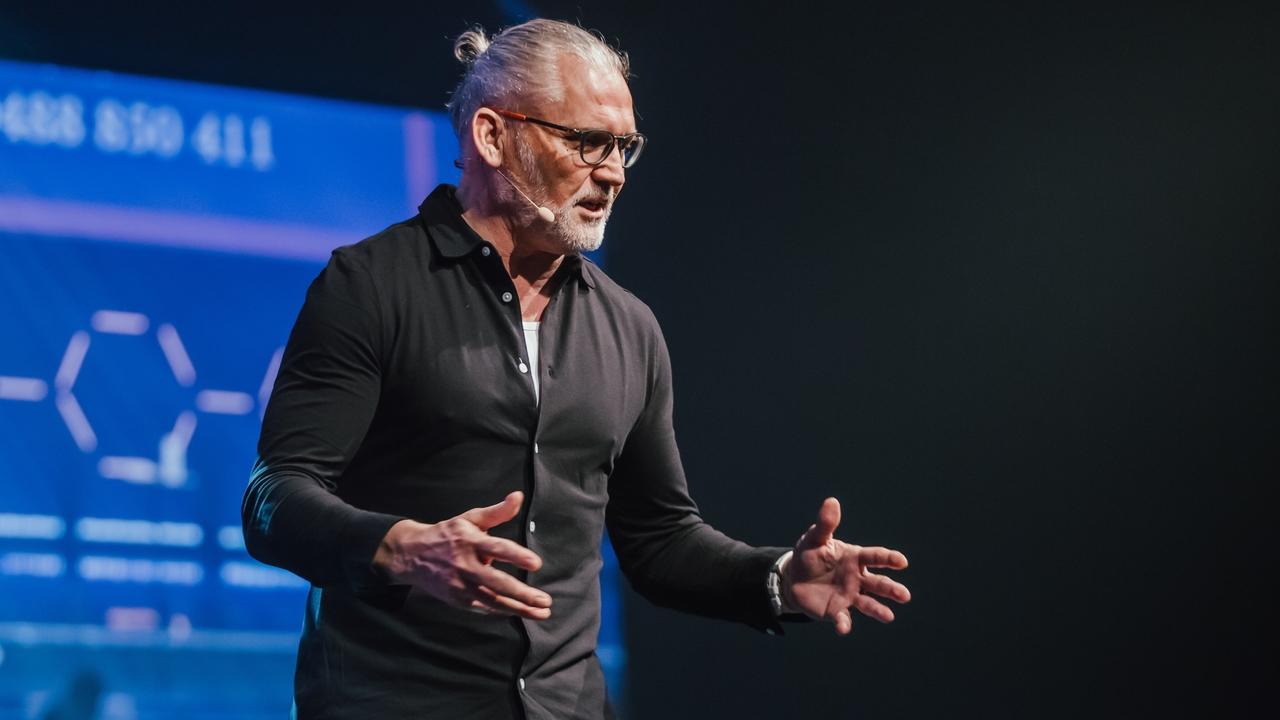The Power of Story in Every Speech
When I first stood in front of a community hall full of people back in the 1990s, my hands were shaking so bad I could barely hold my notes. I was there to talk about local recycling programs - not exactly the most exciting topic, you might think. But then I remembered something my grandmother used to tell me: "Nobody remembers facts and figures, dear, but they never forget a good story." So instead of starting with statistics, I told them about finding my neighbor's wedding ring in a pile of recyclables. That story changed everything. People leaned forward. They smiled. They listened.
Over the past thirty years of speaking to groups across Ontario and beyond, I've learned that storytelling isn't just a nice addition to presentations. It's the heart of connection. Whether you're speaking to five people in a church basement or five hundred at a conference centre, stories are what make your message stick. They turn listeners into participants, and presentations into experiences that people actually remember weeks and months later.
In Canada, we have such a rich tradition of storytelling - from Indigenous oral histories to the tales shared around kitchen tables in every province. When we bring that same authentic, personal approach to our presentations, something magical happens. The formal distance between speaker and audience just melts away. Suddenly you're not performing at people, you're sharing with them.
This article will walk you through the practical ways to weave stories into your talks, based on real experiences from community speaking, business presentations, and everything in between. These aren't fancy techniques from expensive courses - they're lessons learned from actually standing up there, sometimes succeeding beautifully and sometimes learning the hard way what doesn't work.
Why Our Brains Love Stories More Than Data
Here's something I wish I'd understood earlier in my speaking journey: our brains are literally wired for stories. When someone presents you with a list of facts, only the language processing parts of your brain activate. But when you hear a story? Multiple areas light up - the parts that process sound, movement, taste, and emotion all get involved. It's like the difference between reading a recipe and actually tasting the food.
I saw this firsthand when I was asked to speak about financial planning to a group of young adults in Sudbury. My first attempt was full of percentages, compound interest formulas, and retirement savings charts. You could practically hear the crickets. The next time, I started with the story of my friend Marie, who kept her savings in a cookie tin under her bed for twenty years because banks scared her. I talked about how we sat at her kitchen table one afternoon, and she showed me that tin - it had maybe three thousand dollars in it, money that could have grown to so much more. People in that audience were nodding, some were tearing up. After the talk, five people came up to share their own money stories.
The difference wasn't just about engagement, though that matters plenty. Stories help people remember. Information wrapped in narrative gets stored differently in our memory. When you tell someone that saving early matters, they might nod and forget by Tuesday. But when you tell them about Marie and her cookie tin, they remember Marie. And remembering Marie means remembering the lesson about starting to save early.
Stories also build trust in a way that credentials alone never can. Sure, you can tell your audience about your degrees and certifications - and sometimes you should. But when you share a genuine story about your own struggles or learning moments, you become real to them. You become someone who understands their challenges because you've faced similar ones. In Canadian culture especially, where we tend to value humility and authenticity over boasting, this kind of vulnerable storytelling resonates deeply.
The Science Behind Story Memory
Research shows that people retain information about six times better when it's delivered through story rather than straight facts. That's not a small difference - that's transformative. Think about the presentations you've sat through in your life. How many do you remember? Now think about the stories you've heard. I bet you can recall stories from years ago in vivid detail, while last month's PowerPoint presentation is completely gone from memory.
This happens because stories create what researchers call "neural coupling" - your brain patterns actually start to match the storyteller's patterns. When I tell you about walking through a snowstorm, the parts of your brain that process cold and movement activate as if you're experiencing it yourself. This is why a good story doesn't just inform you, it transports you.
Finding Your Stories: They're Closer Than You Think
The biggest mistake I see new speakers make is thinking they don't have any good stories to tell. "My life is boring," they say. "Nothing interesting has ever happened to me." That's absolutely not true. Every single person has dozens of stories worth telling - you just need to know where to look and how to recognize them.
Start with your everyday experiences. The best presentation stories often come from ordinary moments that reveal something universal. Remember, you're not trying to compete with Hollywood movies here. You're trying to create connection and illustrate points. Some of my most effective stories have been about things like getting lost on the way to an important meeting, dealing with a difficult neighbor, or learning to make my grandmother's cabbage rolls.
Keep what I call a "story journal." Nothing fancy - I use a simple notebook that sits on my kitchen counter. When something happens during your day that makes you feel something - frustration, joy, surprise, embarrassment - jot down a few sentences about it. Not every moment will become a presentation story, but you'd be surprised how often these everyday incidents perfectly illustrate a point you need to make months later.
Mining Your Personal History
Your past is full of presentation gold. Think about your first job, your biggest mistakes, your unexpected successes, the times you failed and had to start over. Canadian audiences particularly appreciate stories about perseverance through difficulty - we respect that kind of quiet determination.
I often tell the story about my first winter driving in Northern Ontario. I was twenty-three, thought I knew everything, and ended up in a ditch during a whiteout. A farmer stopped his truck, pulled me out, and instead of lecturing me about my stupidity, he just said, "Well, now you know what black ice feels like. You won't forget that lesson." That thirty-second story has illustrated points about learning from mistakes, the kindness of strangers, and the value of experience over book knowledge in dozens of my presentations.
Don't just focus on your triumphs. Some of the most powerful stories come from your failures and struggles. When you're willing to share what went wrong and what you learned, audiences trust you more. They see themselves in your struggles. Nobody can relate to someone who's never made mistakes, but everyone understands what it's like to mess up and have to figure out how to move forward.
Borrowing Stories (The Right Way)
You don't have to rely only on your own experiences. Stories about other people, historical events, or things you've witnessed can be just as effective. The key is always being honest about the source. Never claim someone else's experience as your own - audiences have good instincts about authenticity, and getting caught in even a small dishonesty destroys your credibility completely.
When I share stories about my friend Marie's cookie tin, or my grandmother's advice, or that farmer who pulled me out of the ditch, I'm clear that these are other people's stories that impacted me. That honesty actually adds to the story's power because it shows you're someone who learns from others and gives credit where it's due.
Structuring Stories That Actually Work
Having good raw material is only half the battle. You need to know how to shape that material into a story that serves your presentation. Over the years, I've developed a simple framework that works for most speaking situations. It's not rigid - stories should feel natural, not formulaic - but it gives you a solid structure to build on.
Every effective story needs three basic elements: a beginning that sets the scene and creates interest, a middle where something happens or changes, and an end that resolves the situation and connects to your larger point. This sounds obvious, but you'd be surprised how many speakers jump into the middle of a story or trail off without a clear ending.
The Opening: Setting the Scene
Your opening needs to quickly establish where and when the story takes place, who's involved, and what the situation is. But here's the trick - you want just enough detail to create a picture, not so much that people get bored before anything happens. I aim for about three to five sentences for most story openings.
Bad opening: "So there was this time when I was working at my job and something happened with a customer."
Better opening: "It was a Tuesday morning in February, and I was working the customer service desk at a hardware store in Sudbury. A woman came in carrying what used to be a snow shovel - now it was just a handle with some jagged plastic attached."
See the difference? The second version gives you specific details that help you picture the scene, but it's still quick and moves forward. You know where we are, what the weather's like, and there's already a hint of conflict or interest with that broken shovel.
The Middle: Where Things Happen
This is where your story actually unfolds. Something needs to happen - a challenge arises, a realization occurs, a conflict develops, or a change takes place. The middle is usually the longest part of your story, but it shouldn't meander. Every sentence should move things forward or add important detail.
Use dialogue when you can. Instead of saying "She was angry," show it: "She slammed that broken shovel on the counter and said, 'This is the third one this winter!'" Dialogue makes stories come alive and helps your audience hear the scene, not just see it.
Include sensory details that matter. Not every detail - we don't need to know what color shirt you were wearing unless it's relevant. But telling me the store smelled like sawdust and oil, or that your hands were shaking, or that you could hear the coffee maker gurgling in the back room - these little touches make the story real.
The Ending: Making Your Point
This is where a lot of speakers stumble. They tell a great story but don't clearly connect it to their presentation topic. Your ending needs to do two things: resolve the story itself and explicitly link it to the point you're making.
Sometimes the link is obvious from the story itself, but even then, it helps to state it clearly. Don't make your audience work too hard to figure out why you told them this story. After finishing the broken shovel story (which ended with me learning about the importance of asking questions before making assumptions), I would say something like: "That moment taught me that listening first and responding second isn't just good customer service - it's essential for any kind of communication."
Common Storytelling Mistakes and How to Fix Them
After watching hundreds of speakers over the years, and making plenty of mistakes myself, I've noticed some patterns in what goes wrong with presentation stories. The good news is that most of these problems are easy to fix once you know what to look for.
Making Stories Too Long
This is probably the most common problem. You get excited about your story and include every detail, every side character, every twist and turn. But unless you're a professional storyteller doing a performance, your presentation stories should usually be between one and three minutes. Anything longer and you risk losing people or throwing off the pace of your talk.
Here's a test I use: can you tell this story to a friend in a casual conversation without them getting distracted or checking their phone? If your story takes ten minutes to tell, it needs editing. Cut the tangents, combine characters, skip the parts that don't directly serve the story's purpose. It's painful to cut good material, but a tight two-minute story beats a rambling five-minute one every time.
Using Stories That Don't Connect
Sometimes speakers fall in love with a story and try to force it into a presentation where it doesn't really fit. I've done this myself - I had this great story about getting chased by a goose at a park, and I kept trying to work it into presentations because people always laughed. But unless I was talking about facing your fears or dealing with unexpected challenges, that goose story didn't serve any purpose except getting a cheap laugh.
Every story in your presentation should have a job to do. It should illustrate a point, demonstrate a principle, create emotional connection, or provide context for information you're sharing. If you can't clearly state what purpose a story serves, cut it, no matter how much you love it.
Telling Other People's Stories Badly
We've all heard speakers tell famous stories - the starfish story, the rocks and jar story, various inspiring quotes and anecdotes. These can work, but they're tricky. The problem is that many people in your audience have probably heard these stories before, sometimes multiple times. They lose their impact through repetition.
If you're going to use a well-known story, you need to add something new to it - a fresh perspective, a connection to your specific context, or a twist that makes people reconsider what they thought they knew. Otherwise, stick to stories that are uniquely yours or less commonly told.
Practicing and Refining Your Stories
Here's something that surprised me when I started speaking regularly: stories get better with repetition. Not because you're memorizing them word-for-word, but because you learn what works and what doesn't through audience feedback. You notice which details get reactions and which ones people tune out during.
I tell key stories in almost every presentation I give, but they've evolved significantly over the years. That story about getting pulled out of the ditch? The first time I told it, I spent too much time describing the weather conditions and not enough on the farmer's kindness. I included unnecessary details about what kind of truck he drove. Over multiple tellings, the story got sharper and more focused on the human connection rather than the logistics of winter driving.
Practice your stories out loud, not just in your head. How a story reads on paper and how it sounds when spoken are completely different. I practice while driving (safely, with my eyes on the road), while making dinner, while walking. Each time, I'm not trying to memorize exact words, but rather getting comfortable with the flow and the key moments I want to hit.
Reading the Room
One skill that comes with experience is learning to adjust your stories based on audience response. If people seem engaged, you can include a bit more detail. If you're losing them, you can cut to the conclusion more quickly. This flexibility only comes from really knowing your stories well enough that you're not locked into a rigid script.
Watch for the physical signs of engagement - people leaning forward, making eye contact, nodding, smiling at appropriate moments. If you see people checking phones, looking away, or shifting restlessly, your story is probably running too long or not connecting. Don't panic, just wrap it up more quickly and move on.
Building Your Story Collection Over Time
One of the most valuable things you can do as a speaker is intentionally build a collection of stories that serve different purposes. I keep a document on my computer (and backed up - always back up your work!) where I store stories organized by theme: stories about learning from mistakes, stories about perseverance, stories about communication, stories about change, and so on.
When I'm preparing a presentation, I review these stories and select the ones that best serve my topic. Having this library means I'm never scrambling to think of relevant stories at the last minute. It also means I can choose stories that I've already tested and refined rather than trying out brand new material every time.
Your story collection should grow naturally over time. As you live your life, pay attention to moments that might become presentation material. As you hear other speakers, note stories that work well and think about what made them effective. As you read books and articles, mark passages that could become stories with your own personal connection added.
Don't worry if you're just starting out and only have a few stories in your collection. We all begin somewhere. Focus on developing three to five solid stories that you can tell well, and build from there. Quality matters much more than quantity. I'd rather hear someone tell three stories brilliantly than twenty stories poorly.
The Cultural Context of Canadian Storytelling
Something I've noticed in my years speaking across Canada is that our storytelling has its own character. We tend to be more self-deprecating than our American neighbors, more comfortable with stories where we're the ones who messed up rather than the hero who saved the day. This isn't a weakness - it's actually a strength that creates genuine connection.
Canadian audiences appreciate humility and authenticity. Stories that show you learning through difficulty or admitting you don't have all the answers tend to land better than triumphant tales of unqualified success. We value the journey and the struggle, not just the destination.
We also have a rich multicultural context that shapes how stories are received. Being aware of diverse perspectives and experiences in your audience helps you choose stories that include rather than exclude. When I'm speaking to diverse groups, I try to include stories that reflect different backgrounds and experiences, or I frame my personal stories in ways that highlight universal human experiences rather than assuming everyone shares my specific cultural context.
Moving Forward With Your Storytelling Practice
The art of storytelling in presentations isn't something you master overnight. It's a skill that develops through practice, reflection, and willingness to learn from both successes and failures. Every time you speak, you're gathering data about what works for you and your audiences.
Start small if you're nervous about incorporating stories. Add one personal anecdote to your next presentation. Pay attention to how it feels to tell it and how people respond. Then try another story next time. Gradually, storytelling will become a natural part of how you communicate, not something you have to consciously think about adding.
Remember that your stories don't have to be dramatic or extraordinary to be effective. Some of my most powerful stories are about ordinary moments - a conversation with a neighbor, a realization while washing dishes, a small kindness from a stranger. What matters isn't the scale of the event but the truth it reveals and the connection it creates.
Keep collecting stories from your life. Keep practicing. Keep paying attention to what makes a story work. And most importantly, keep sharing. Every time you tell a story that helps someone understand an idea better or feel less alone in their struggles, you're using one of humanity's oldest and most powerful tools for connection and learning.
The next time you're preparing a presentation, don't just think about what information you need to convey. Think about what stories you can share that will help that information come alive. Your audiences will remember you better, understand your message more deeply, and connect with you more genuinely. That's the real power of storytelling in presentations.




